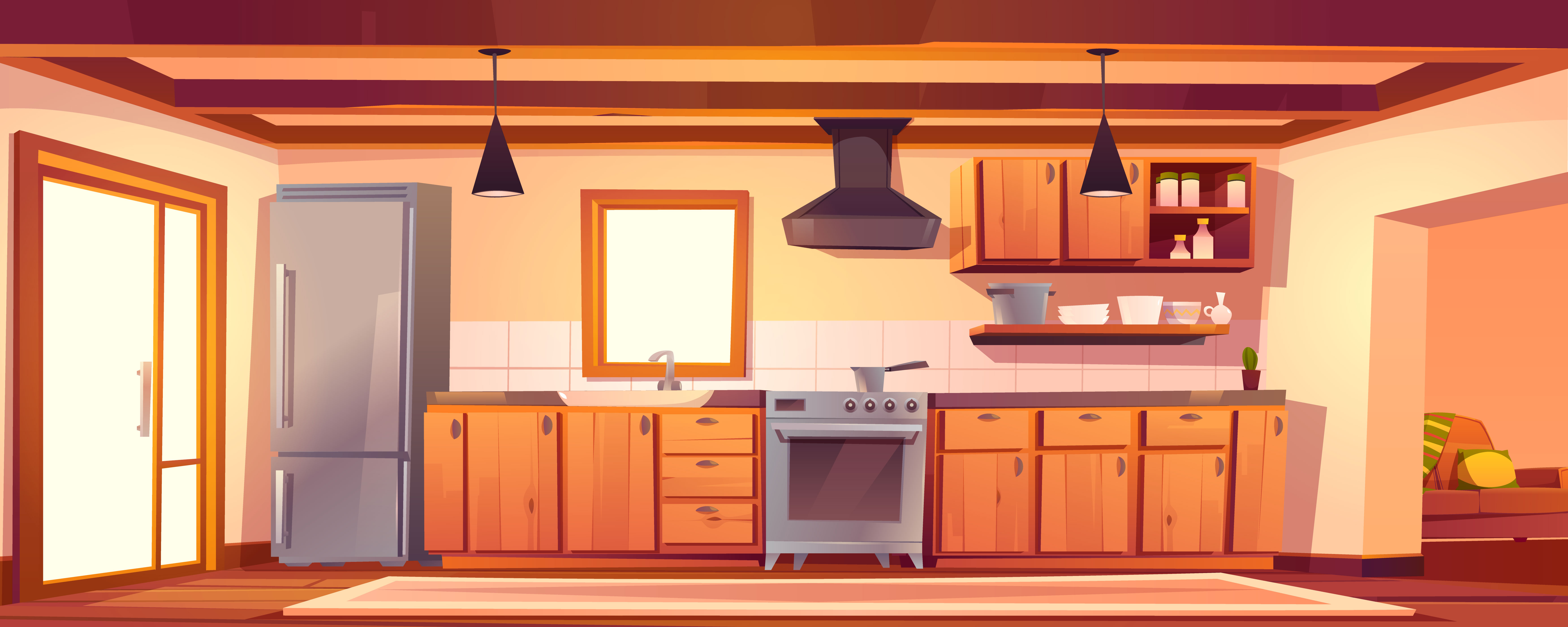August 30, 2021
ORGANIZING OUR KITCHEN

Photo by Deniz Altindas on Unsplash - Image by @upklyak on freepik
When it comes to nutrition, a lot of the fight is about what and how much we eat. But one of the keys that is often forgotten is the organization of our kitchen...
- Small equipment -
Essential and often overlooked, here is a small list of the essentials :
- Small size : to cut and peel fruits and vegetables ;
- With teeth : for certain foods such as tomatoes or citrus fruits ;
- « Chef » : heavier and with a wider blade, offers precision and ease for slicing large pieces ;
- Bread : so that it doesn’t squish when cutting it ;
- Spices -
LSauces and toppings can increase our calories intake quickly, so having a nice collection of spices on hand is a great way to alleviate the problem. So if we are tire of our meals, a few herbs and spices can enhance the taste without resorting to a sauce.
- The oil sprayer -
Rather than pouring oil directly from the bottle into our food, we can use a spray bottle. Because the buds are different, we have to assess, what our vaporization represents in a teaspoon or tablespoon (FYI : One tablespoon of oil is 120 calories). And avoid pre-packaged sprays (as they often contain non-sticky and anti-foaming agents as well as preservatives).
- Let's highlight healthy foods -
We tend to take what we see first (what comes first at hand). Therefore, let's put healthy and/or supportive foods for our weight loss in our field of vision. For example : we could store fruits, vegetables and yogurt in the front of our refrigerator so that they are easier to grab.
- Measuring the portions -
For many of us, portion control is essential, but it can be difficult to apply, especially when we're in a hurry. We can buy plates, bowls and cups with indexes (grams/litres). Even healthy foods can be overestimated and lead to weight gain. Note that there are also millimetres ones in order to avoid excess.
Many of us snack from the original packaging (this action pushes us to excess without being aware of it). So when we come home from shopping, let's take the time to pack our food by portion. This solution will allow us to limit our consumption when hunger arises..
- The cupboards -
- Our fridge and freezer -
The ideal temperature for our refrigerator should be between 0°C and 7°C (32°F and 45°F). The thermostat can be set between 0°C and 4°C (32°F and 40°F) to compensate for temperature variations due to repeated opening and closing.
Warning, the temperature is not uniform, some areas are colder than others :
- Leftovers (refrigerate within two hours after cooking) ;
- Poultry ;
- Fish ;
- Minced meat.
- Raw vegetables in sachets ;
- Pastries ;
- Butter, margarine ;
- Eggs ;
- Dairy desserts (yoghurts, cream, fresh cheeses, etc.).
- The salad ;
- Vegetables ;
- Packaged fruit ;
- Packaged cheeses during ripening.
- Water bottles ;
- Fruit juices ;
- Milk ;
- And other drinks.
AVOIDING BACTERIAL CONTAMINATION : Under no circumstances will we store the shopping bag containing several kinds of food, as it is. Likewise, no food will be placed directly in the drawers or on the shelves. We will only store washed and wrapped (by us) vegetables and fruit, as well as food for which we have carefully replaced the original packaging (whether paper, cardboard or plastic).
COLD DOESN'T KILL GERMS : Most food contaminations are caused by eggs and their derivatives products. The only way to limit microbial growth is to cook food at a high temperature for a long time.
ELIMINATE BAD SMELLS : We can place an open box filled with baking soda (this will absorb bad odours). Let's slip a sprig of thyme into the fridge drawer where the strong-smelling cheeses are stored.
- Junk food -
Because the more choice and variety we have, the more we eat, let's keep just one type of « unhealthy » snack and in limited quantities. By limiting our options, we will avoid overeating and emotional cravings.
Conclusions
Not everything is served to us on a silver platter, but nothing prevents us from preparing it in advance, by organizing our kitchen in such a way as to highlight what is essential to us to facilitate the road to our ideal weight.
What do you think?
